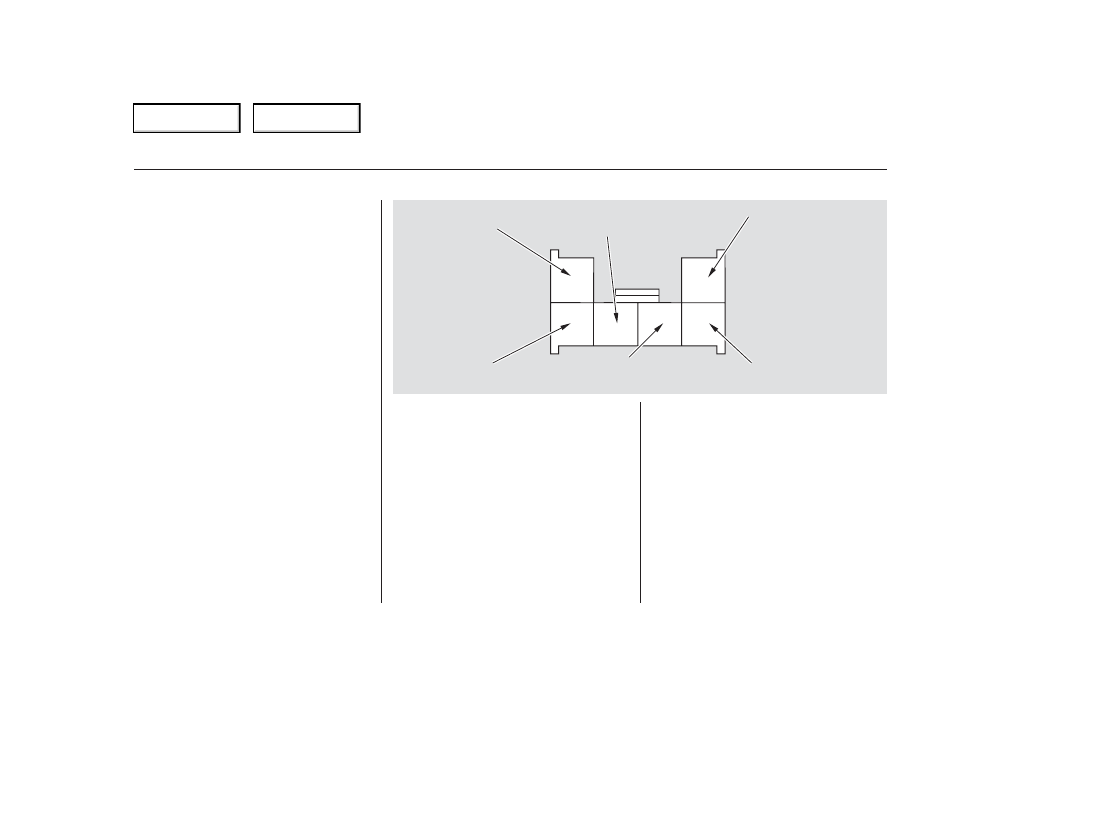Acura RSX (2006 year). Manual - part 11

If you choose electric brakes, be
sure they are electrically actuated.
Do not attempt to tap into your
vehicle’s hydraulic system. No
matter how successful it may seem,
any attempt to attach trailer brakes
to your vehicle’s hydraulic system
will lower braking effectiveness and
create a potential hazard.
See your trailer dealer for more
information on installing electric
brakes.
Trailer lights and equipment must
comply with federal, state, province,
and local regulations. Check with
local trailer sales or rental agencies
for requirements for the areas where
you plan to tow, and use only
equipment designed for your vehicle.
Since lighting and wiring vary by
trailer type and brand, you should
have a qualified technician install a
suitable connector between the
vehicle and the trailer. Improper
equipment or installation can cause
damage to your vehicle’s electrical
system and affect your vehicle
warranty.
If you use a converter, you can get
the connector and pins that mate
with the connector in your vehicle
from your dealer.
Your vehicle has a trailer lighting
connector located behind the right
side panel in the cargo area. Refer to
the drawing above for the wiring
color code and purpose of each pin.
Towing a Trailer
Trailer Lights
162
TAILLIGHT
(RED/YELLOW)
LEFT TURN SIGNAL
(GREEN/RED)
RIGHT TURN SIGNAL
(GREEN/YELLOW)
GROUND
(BLACK)
BACK UP LIGHT
(GREEN)
BRAKE LIGHT
(WHITE/BLACK)
Main Menu
Table of Contents